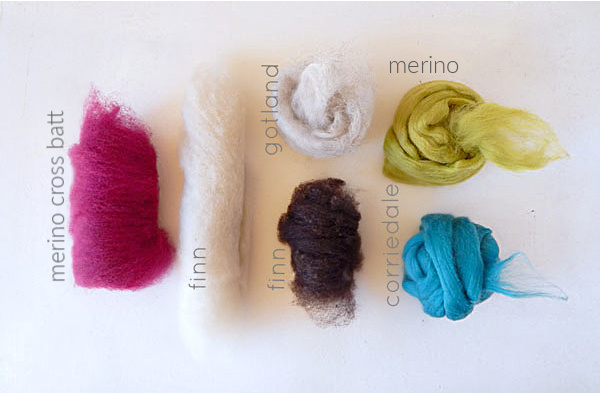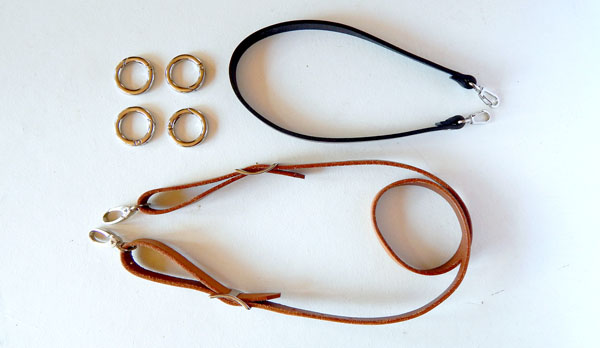
This list gives you a good indication of what you will need for this class, in particular the base materials. There is flexibility in the list- some items can be substituted, and the more you experiment, the more opportunity we have for discussion during the class.
Bags are a great opportunity to play with surface design, so do start to imagine some ideas for added elements, and what materials you might need to create them!
Please email me if you have any questions about any of the items, for sources and possible substitutions.
Fibres and materials:
6-8 ounces/170-228grams total coarse fiber wool in your colour selection
The amount of wool you need will depend on the size of bag you make. As an idea, a small messenger style bag with full front flap will use about 4 ounces (113grams) of wool. A medium size market style bag, with no flap, will use about 6 ounces (170grams) of wool.
You’ll want a couple of extra ounces on hand for design elements.
Wool breeds that are good for bag making:
Bergschaf, Corriedale, Finnish, Merino Cross. I have also used Bluefaced Leicester and BFL/Gotland cross and been very happy with the results. Merino wool is great for smaller bags, or bags that will not be used to carry heavy items, or items with sharp points. A 21 or 23 micron merino, very well fulled will be very strong and long-lasting, as will the more coarse wools.
Sources:
Paradise Fibers (US): Corriedale, Gotland
Living Felt (US): MC-1™ Merino Cross Batt, Corriedale, Merino
Legacy Studio: (Canada): Corriedale
Felt & Craft Felting Supplies (Canada): Bergschaf
World of Wool (UK): Finn, Gotland
Adelaide Walker (UK); Bergschaf in batting form
Piiku (Finland): Finn (carded fleece batts)
FeltFine (Australia): Finn, Gotland, Corriedale
Tools and Hardware
- Bubble Wrap: 2 pieces each approximately 36 inches (90cm) x 36 inches (90cm)
- 36 inch (90cm) square of foam underlay (bubble wrap or firm plastic sheeting can be substituted. I’ll share some tips on resist materials in the class). This will give you enough resist material to create your own unique bag size and shape, plus a pocket.
- Pool noodle, pipe or dowel: pool noodle or 36″ (90 cm) length of 1.5″ (3,8 cm) diameter PVC pipe (if you make your table risers from this-you’ll have about this length left from an 8 ft (240 cm) length of pipe), or 36 inch (90 cm) length of one inch diameter wooden dowel. You will only need one of these items. It is for rolling up the work initially, and rolling over the top of the work. The pool noodle will work well, but I prefer the firmness of the pipe or dowel for rolling. A wooden dowel, inserted into the centre of a pool noodle, is another excellent option.
- Natural liquid dish soap or dish detergent (like Seventh Generation or Nature Clean)
- Ball brause or other tool to wet out your felt
- Small bucket for felting solution
- Sharp pointed scissors
- Measuring tape
- Calculator
- Notebook and pen/pencil
- 2-3 old towels
- Leather straps, if desired: ValueBeltsPlus
The two sizes I use most for my bags are:
- Adjustable Shoulder Messanger style, cross body: 48 inches long
- Shoulder Purse Handbag Strap: 21 inches long
Your strap length will be determined by your bag design and personal preferences! You can also create a strap through felting and I include instruction for making your own simple straps with leather.
Extra materials for surface design are not included on this list. There are so many possibilities and ideas you might want to explore to personalize your bag.
We can discuss these options and what you might need to create your design in the online classroom, once the class has started. There will be lots of inspiration in seeing what other students are doing; shapes, sizes and design elements they include in their bags, which will help you with your own choices! Or just give you more ideas for more bags!

